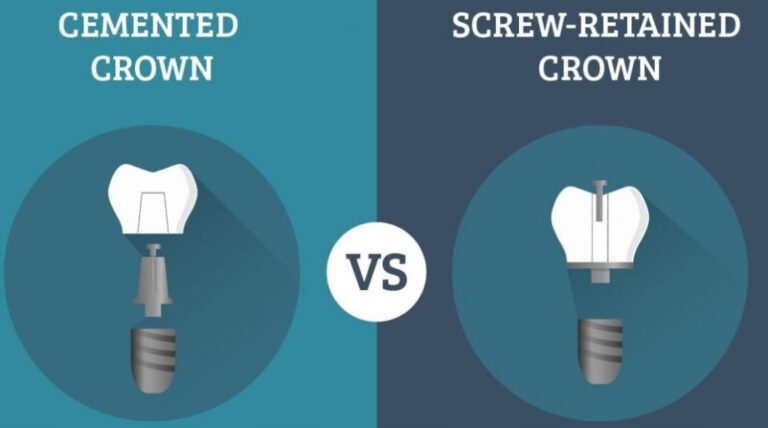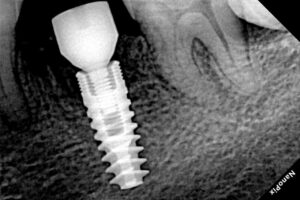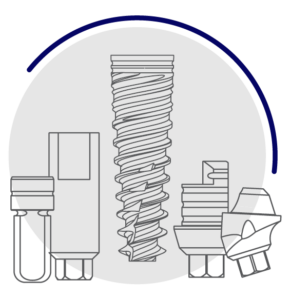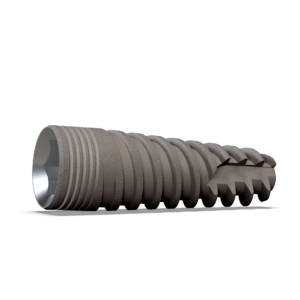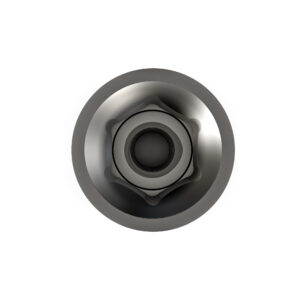When you’re debating on dental implant restoration, you’re likely deciding between screw- and cement-retained restoration options. While they each have their advantages and disadvantages, your final decision will be based on what best suits your practice and the individual patient. When considering whether to invest in screw- or cement-retained restored dental implants, consider the following differences.
Screw-Retained Restoration
Screw-retained restorations provide a simple and secure method for maintaining a prosthetic restoration. These restorations are designed to either be screwed into the implant itself or into a screw-retained abutment on the implant (also known as a Multi-unit Abutment).
Choosing a screw-retained restoration will give you more predictable retrievability. They’re not very difficult to remove if surgical interventions are required, and they don’t need much interocclusal space. Another benefit is the ability to take advantage of angulated screw channel solutions, allowing screw-retained restorations to be used for a large range of indications. Screw-retained restorations are often more cost-effective than cement-retained versions, both when considering laboratory fees and treatment.
However, screw-retained restoration is not recommended for anterior teeth because the esthetics would be compromised. It also proves difficult for a patient to keep their implants clean.
Cement-Retained Restoration
Cement-retained restoration, on the other hand, is a more traditional design. These implants are used similarly to cementing a crowd restoration on a tooth.
This option has long been used in dental practices, largely because it’s easy to achieve a passive fit. Many prefer the esthetics of this version of restoration since an angulated abutment can help create a more natural-looking emergence profile. Additionally, many providers simply feel more comfortable with cement-retained restoration since it has been the industry standard for years.
Cement-retained restoration does have its negatives, however. Retrievability isn’t typically possible in these cases, and if it is possible, it gets more difficult with time since the cement gets stronger. Further, excess cement is often an issue that can lead to tissue damage and chronic inflammation.
Which is Right for My Practice?
Both screw- and cement-retained restorations are useful in certain situations. Cement is typically preferable in situations where you’re encountering short-span prostheses with margins at or over the mucosa level. You may also opt for cement if you desire an easier control of occlusion with no access hole.
On the other hand, screw-retained restorations are recommended if you’re looking for retrievability. They’re also preferable for long-span fixed prostheses or fixed prosthesis with the cantilever design. If you are considering using cement-retained but doubt your ability to remove all the excess cement, you might opt for screw-retained instead.
Ultimately, there are pros and cons for both types of implant restoration, so think carefully before committing. Factors surrounding the individual patient, practice, and provider will impact with restoration method will work best for you.
Your Source for All Dental Implants
Whether you prefer screw- or cement-retained restorations, MSDI can help. Medical Systems and Devices International is proud to be your source for all your dental implant needs. We offer the highest quality products at the most competitive prices in the industry, and we work with each client individually to ensure you’re getting exactly what you need.
MSDI has more than 15 years of experience in the industry and has helped countless customers from across the globe. Our products are simple to use, even for beginners, and provide a full prosthetic solution. Whether you prefer internal hexagon, conical, or slim implant systems, we can provide everything you’ll need. We also carry a wide range of bio materials, sutures, and digital imaging products.
Come discover how MSDI’s products can bring your dental practice to the next level.
References:

